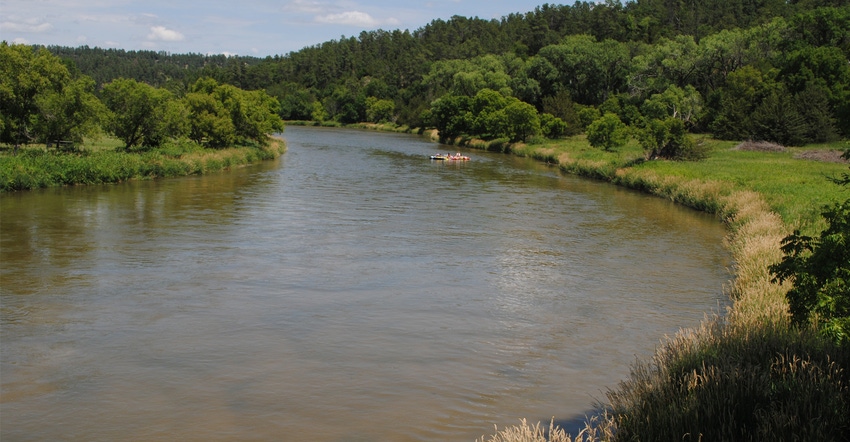October 13, 2021

Some of the nitrogen used as fertilizer is converted to nitrate that can be easily lost from the root zone, eventually contaminating ground and surface water.
In addition to being harmful to human health, excess nitrate in drinking water is costly for small communities to treat. Sandy, irrigated soils in Nebraska are highly vulnerable to nitrate leaching, and few options exist for controlling nitrogen losses from these fields.
These concerns motivated Nebraska researchers to try something new on this old problem.
In 2018, the Nebraska Water Center received a grant from the Nebraska Environmental Trust to research how injecting carbon into the subsoil — by way of mulch and sawdust — could absorb and remove extra nitrate from the soil. The project is led by Dan Snow, research professor and director of the University of Nebraska’s Water Sciences Laboratory.
New approach
“This project is innovative because it provides a new, economical approach for improving groundwater quality,” Snow said.
The project’s goal is to offer a cost-effective method for producers and Nebraska’s natural resources districts to reduce nitrate leaching beneath cropland in areas that are most vulnerable to groundwater contamination.
This spring, Snow and collaborators injected fine-ground wood mulch below the root zone using a modified subsoil plow on two demonstration sites in northeast Nebraska’s Bazile Groundwater Management Area.
They will monitor differences in nitrate leaching between treated and untreated fields for several growing seasons to measure the method’s effectiveness. The team will return this fall to collect water, soil and plant biomass samples for analysis.
Ultimately, the project seeks to demonstrate the efficacy and cost-effectiveness of using an abundant carbon source to intercept and remove dissolved nitrate after it has left the root zone.
Research team
In addition to Snow, the team includes Arindam Malakar, research assistant professor, Nebraska Water Center; Amy Schmidt, assistant professor, Department of Biological Systems Engineering, University of Nebraska–Lincoln; Daniel Miller, research microbiologist, USDA Agricultural Research Service; and Xiaochen Dong, graduate student, School of Natural Resources, Nebraska.
Additional project support is provided by the Daugherty Water for Food Global Institute and Bazile Groundwater Management Area. Learn more at watercenter.unl.edu.
Starita is with the Nebraska Water Center.
Source: UNL IANR News, which is solely responsible for the information provided and is wholly owned by the sources. Informa Business Media and all its subsidiaries are not responsible for any of the content contained in this information asset.
You May Also Like




